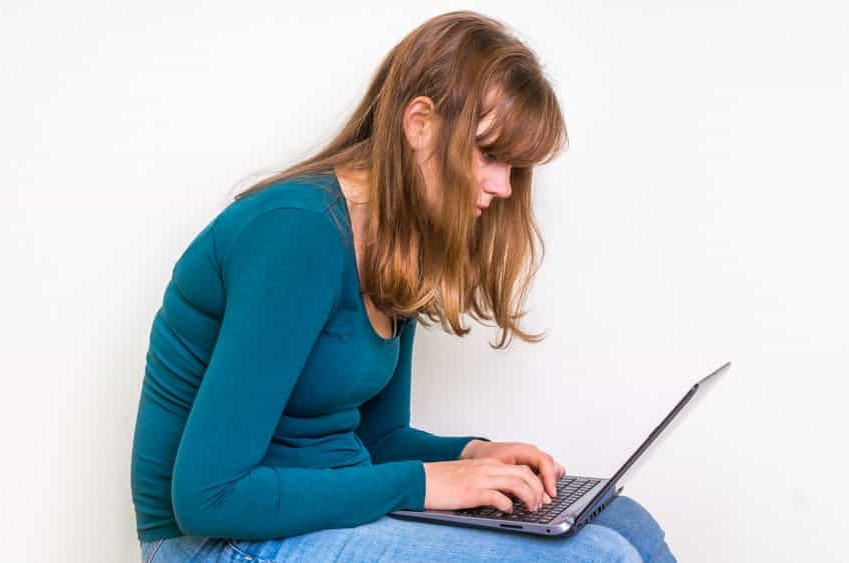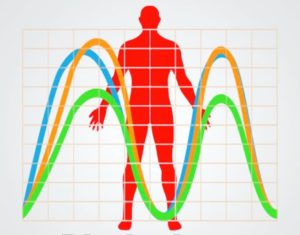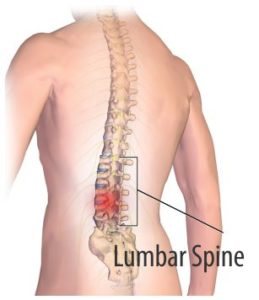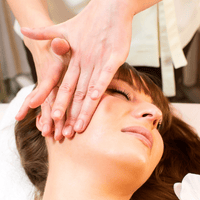
10 minute read
Is Working From Home Too Painful For You?
With one year of lock down well and truly completed we have seen a surge in neck, shoulder, and low back pain at our Clinic in Wimbledon.
It was not that long ago that we remember people complaining that they wanted to work from home to improve their work life balance. Now people seem to be suffering from pain by working from home. So what has gone wrong?
At home one might imagine you have more control over your time and life and yet many struggle to get the balance right. What are we missing?
What Has Gone Wrong?
Aside of the fact that when working from home you may not have the right ergonomics, ie desk height, the right chair etc, working from home raises an often neglected issue.
It is not just about the chair or going to bed later than normal, but that thinking is on the right trail. It is to do with your body’s biorhythm. When we are out of our normal routine, due to almost any type of change, physical, emotional, mental, fatigue, postural, worry etc our body is liable to react to it. We often call this the ‘work life balance’ but it is much deeper than that.
What exactly are biorhythms?
 Almost every cell in our body contains a clock. It tells the body when to wake, when to sleep, when to switch genes on and off, when to release enzymes, when to create a protein, etc. Collectively all these clocks are synchronised with each other. Together we call this the biological clock, ie biorhythm, as these clocks follow a pattern.
Almost every cell in our body contains a clock. It tells the body when to wake, when to sleep, when to switch genes on and off, when to release enzymes, when to create a protein, etc. Collectively all these clocks are synchronised with each other. Together we call this the biological clock, ie biorhythm, as these clocks follow a pattern.
The best example of this working harmoniously is seen in a new-born baby. We all know that a new-born baby needs routine to flourish, ie to be fed at a regular time, bathed at a set time, put to bed at a certain time, given regular play time, etc.
Life Long
One can’t say, “lets leave the baby and feed her when we get back from shopping!” Routine is key. That routine is life-long.
As we grow we can bend the rules a little and skip meals, go to bed later, take less activity etc but if we bend them too much, the biorhythm can break down. This means the body’s ‘house keeping’ routine can get messed up, ie repairs etc get put on the back-burner. For example healing and tissue repair is governed by genes that mostly get switched on at night in deep sleep. If you constantly skip on sleep, the healing cycle may not get fully completed and tissue failure may ensue.
Tissue Failure
As a society we are obsessed with ‘structural failure’ causing symptoms. We seem to look to structural causes such as a slipped disc causing the pain. But few ask why should such a structure fail in the first place? Surely if the person were elderly one could reasonably suppose a disc to fail at that age? But if the person is in the prime of their lives why should something fail at that time? After all, young healthy skin will not suddenly tear open ‘at the drop of a hat’ and spill out blood.
Looking in the wrong direction ?

To look only at structural causes may be missing the point to a degree. There are countless studies which show that clinical investigations like X-rays and MRI scans do not correlate at all well to pain, ie a bad image does not mean bad symptoms.
A badly degenerated spinal structure
does not mean that is the cause of the pain.
Real Life Example
This reminds me of a patient I treated perhaps 10 years ago. I saw a man in his late 50s who told me he was diagnosed with advanced spinal degeneration (ie wear and tear) in his neck. He believed nothing could be done. I popped him on the treatment table and about 20 minutes later he stood up. Firstly his neck felt heaps better and his nagging neck pain and headache had mostly gone, and as a bonus he was able to turn his neck left and right much further.
I explained to the patient that following the treatment there would still be degeneration and wear and tear in his neck. Nothing that the treatment did could change that, but as he was much improved after the osteopathy treatment it could not be the wear and tear that was causing his pain, as the wear and tear was clearly still there in his spine.
I went on to explain to my patient that what causes the pain is not the wear and tear per se, but more likely it arises from the fatigued soft tissues surrounding the wear and tear, trying to support it. After all, it is the soft tissues that are ultimately the source of the muscle spasm, inflammation, nerve irritation.
Getting Balance Right
 I explained about biorhythms to this patient. In this particular case he had endured a low-level stress that had gone on for some time. There were recent changes in his life, including sitting longer at work, taking less exercise, poor sleep, and overeating. Simply put he felt he was falling apart.
I explained about biorhythms to this patient. In this particular case he had endured a low-level stress that had gone on for some time. There were recent changes in his life, including sitting longer at work, taking less exercise, poor sleep, and overeating. Simply put he felt he was falling apart.
Whichever way you want to view it, he had lost his equilibrium, his harmony, his reserves. He was running on empty.
However to thrive, like the new born baby, his body needed to get back into routine ie, get up at a certain time, move at certain time, eat at a certain time etc. This was not happening.
On fixing his pain, and on following my advice he got better and crucially stayed better.
Back on Track
When the biorhythm is back on track the body’s soft-tissues stay strong the healing abounds. When the biorhythm is weakened, tissue are more likely to fail and injury likely to follow.
Biorhythm: the index of Good Health
If a one accepts the biorhythm is the overarching index of good health, and that the failure of tissue A B or C was a consequence of that weakened biorhythm, one sees healing in a very different light.
When the biorhythm is weak treating a damaged tissue may help, but the cure may be incomplete, and the problem may keep coming back, or worse become chronic.
“If you always do what you have always done,
You will always get what you have always got”.
At the Living Centre Clinic in Wimbledon we specialise in helping you to break out of bad habits, strengthening your biorhythm. Its not just about the treatment, it's the treatment plus more.
We help you fix the pain, and show you how to stop it coming back and how to empower you with what you need to know to self-manage at home.
Our Osteopathy is more than treatment and home exercise. It is a truly holistic approach. We try and get to the root of your issue, with choice advice on self-management, whether postural, physical or emotional factors that are weakening your biorhythm.
Top 12 Tips For Boosting Your Biorhythm & Healthy Body/Mind
There are so many therapies out there to help you with pain. But for any of these to stand the chance of lasting success we suggest the following these tips below. Also we hope these tips will help you achieve years of healthy enjoyable life, physically and emotionally.
- Create a routine – remember shift workers who keep all hours, or erratic hours, will often have more health problems. If you are going through a bad patch of late nights, stress etc it's important to get this under control. This applies even to low level stress, as the effect may be cumulative.
- Early to bed. The genes for healing are most active during night sleep and not that active in the day time or day sleep. Extra time the good side of midnight is a great boot.
- The same time. Go to bed and awaken at the same time each and every day – even weekends till you are better. This is the one quick win to help reset your body clock. Similarly eat and exercise at the same time daily.
- Emotional bad patch. If you are going through a bad patch emotionally, try to avoid getting drawn in to conversation in the first place – remember “don't take the bait” and get drawn in to conflict or an argument. Alternatively consider seeing your doctor or a counsellor to help you through.
- Life stress. If you are going through a bad patch with sheer amount of work, try leaving something that can wait, or maybe ask for help from family member or workplace. Remember when you are swamped with work, it is better to be “nearly perfect” than “really perfect”. The time and energy to get to “really” is disproportionately large. Also if you have to rush, then “rush slowly”.
- Create time. (Note, don’t try to “find time” – it never happens in the long run), but create time to exercise. At the least a 30 min brisk walk daily, at the same time each day.
- Sunlight. Get natural sunlight each day. Again, if possible the same time each day. Walking in nature, woods, or a field have proven benefits to help relax the mind.
- Stillness is bad. Avoid static postures, ie sitting or standing still for long periods. These can add an extra burden on the spine. When you are still the tissues can choke-up. Choked tissues restrict healing. Free following tissues bring health.
- Socialise. Keep a good social circle. Chat to friends regularly. People who have a good social circle often fare better emotionally – so don’t cut yourself off; or try to start working on creating a circle of friends if you have let yours dwindle. Face to face is always best where possible.
- Care for someone else. Try to do a good deed for someone at least once a day. Even a small one, maybe a smile, maybe a few minutes of your time, maybe more. Doing things for others helps us release a little more happy hormones, “every little helps”.
- Gratitude. Set aside time to be grateful each night before bed, ie like keeping a gratitude journal (written or in the mind). You will be surprised how many nice things you can find to think of. Some of our patients programme their smart speaker to remind them to do this at the end of the day, before bed time
If all else fails… If you feel you have done your best and you still can't get on top of things, why not give us a call? Our friendly team can help you through a bad patch, and get you doing the things you want to keep doing – get back to work, playing with the kids, exercising again and enjoy living pain free!

Ask me your question
Fill in a form click here
Email me click here
Vispi Jamooji DO PG Cert SPOP
Registered Osteopath (London, 1986)
Specialist Paediatric Osteopath & Cranial Osteopath
Living Centre Clinic
32 Durham Road, Raynes Park, London SW20 0TW
better@livingcentreclinic.com
020 8946 2331











